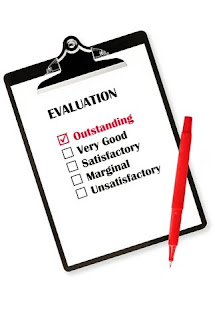For the sake of those who do not receive the Becta newsletter I have copied the following (with permission). Although the word e-Portfolio is not mentioned anywhere in the article I feel that so many of the initiatives mentioned here would benefit from e-Portfolio connectivity. I quote Niel McLean, Executive Director, Schools and Families:
 "In this edition I’d like to draw your attention to the idea of Learner Entitlement. We are making good progress towards developing a technology-confident education system. One of the key challenges we have to address is improved teaching with technology and promoting a technology-related learner entitlement. Delivering such an offer requires schools and teachers to consider how they are going to develop their teaching through technology, and what this might mean for their learners. Working with subject and phase experts from the field, Becta has produced guidance on the importance of providing learners with opportunities to use ICT tools to support their learning in all subjects. This will assist teachers in improving the ways in which they and their learners use technology.
"In this edition I’d like to draw your attention to the idea of Learner Entitlement. We are making good progress towards developing a technology-confident education system. One of the key challenges we have to address is improved teaching with technology and promoting a technology-related learner entitlement. Delivering such an offer requires schools and teachers to consider how they are going to develop their teaching through technology, and what this might mean for their learners. Working with subject and phase experts from the field, Becta has produced guidance on the importance of providing learners with opportunities to use ICT tools to support their learning in all subjects. This will assist teachers in improving the ways in which they and their learners use technology."In future editions we will be updating you on some of our other major areas of work, including improving parental engagement through online reporting. Take a look at our new case study videos on this theme, starting with South Dartmoor Community College.
"You can access further information on each item featured below on our website. Please contact us with any suggestions or comments you'd like to make. Do feel free to share this newsletter with colleagues who may also be interested in what Becta is doing.
Niel McLean, Executive Director, Schools and Families"
Niel McLean, Executive Director, Schools and Families"
The Home Access Programme
For those interested in the progress of this important programme see the PowerPoint.
For those interested in the progress of this important programme see the PowerPoint.
Learner entitlement to ICT
Pupils should be given opportunities to apply and develop their ICT capability through the use of ICT tools to support their learning in all subjects. Which are the areas of the curriculum that can be truly enriched and enhanced through the use of technology? Becta, in partnership with Teachernet, have published a series of entitlement documents written by subject and phase experts to guide teachers on making the most of ICT in these areas.
Pupils should be given opportunities to apply and develop their ICT capability through the use of ICT tools to support their learning in all subjects. Which are the areas of the curriculum that can be truly enriched and enhanced through the use of technology? Becta, in partnership with Teachernet, have published a series of entitlement documents written by subject and phase experts to guide teachers on making the most of ICT in these areas.
Self-review framework: Share your views
With over 16,000 schools now using the self-review framework we know it is well used. But how useful is it to you? We are conducting an evaluation of the effectiveness and usefulness of the self-review framework and want to hear your views. The questionnaire will be available until 16 October 2009. There will also be the opportunity to take part in more in-depth interviews with our researchers in due course.
With over 16,000 schools now using the self-review framework we know it is well used. But how useful is it to you? We are conducting an evaluation of the effectiveness and usefulness of the self-review framework and want to hear your views. The questionnaire will be available until 16 October 2009. There will also be the opportunity to take part in more in-depth interviews with our researchers in due course.
A guide to the use of e-learning for Diploma delivery
Are you part of a 14-19 consortia? If so our new guide will help you to build e-learning in to the design, provision, management and implementation of the new Diplomas. As well as providing strategic advice and practical support, the guide contains real examples of how e-learning is being used to support Diploma delivery.
Are you part of a 14-19 consortia? If so our new guide will help you to build e-learning in to the design, provision, management and implementation of the new Diplomas. As well as providing strategic advice and practical support, the guide contains real examples of how e-learning is being used to support Diploma delivery.
Professional development for teachers
Regular, timely and appropriate staff training in the use of technology is essential if it is to be embedded within curriculum delivery and support services. The professional development area of the Schools site has been updated with new resources that can help your staff get the most from technology.
Regular, timely and appropriate staff training in the use of technology is essential if it is to be embedded within curriculum delivery and support services. The professional development area of the Schools site has been updated with new resources that can help your staff get the most from technology.
Visit us on YouTube
Our new Becta YouTube channel offers video material covering a wide range of topics on the use of technology in education. The aim of the channel is to share knowledge, advice and personal experiences of learners, leaders and teaching professionals to a wider audience.
Upcoming events
Becta runs and attends many events throughout the year. These are regularly added to the events section of the Schools website.
Our new Becta YouTube channel offers video material covering a wide range of topics on the use of technology in education. The aim of the channel is to share knowledge, advice and personal experiences of learners, leaders and teaching professionals to a wider audience.
Upcoming events
Becta runs and attends many events throughout the year. These are regularly added to the events section of the Schools website.
Handheld Learning Conference
5 October to 7 October 2009, London
Becta is pleased to support this conference, which this year has a theme of 'Creativity, Innovation, Inclusion and Transformation'. There will be opportunities to demonstrate, debate and explore how mobile technologies can be deployed to enable transformational improvements in learning across schools, home, further education, training and business.
NB. All of the above originally posted on the Becta Newsletter September 2009.
5 October to 7 October 2009, London
Becta is pleased to support this conference, which this year has a theme of 'Creativity, Innovation, Inclusion and Transformation'. There will be opportunities to demonstrate, debate and explore how mobile technologies can be deployed to enable transformational improvements in learning across schools, home, further education, training and business.
NB. All of the above originally posted on the Becta Newsletter September 2009.











